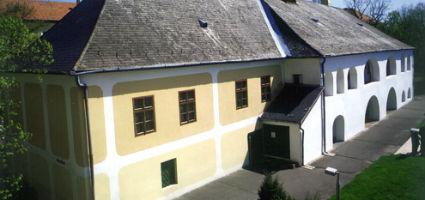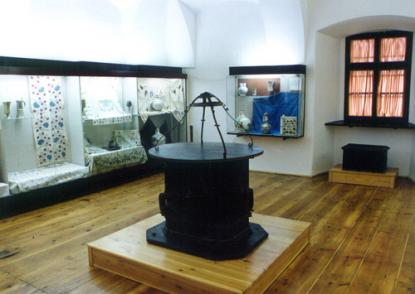2025. December 21. Sunday
Scientific Collections of the Sárospatak Calvinist School - Sárospatak
 |
Address: 3950, Sárospatak Rákóczi út 1.
Phone number: (47) 315-256
E-mail: reftud@iif.hu
Opening hours: Mon-Sat 9-17, Sun 9-13
01.11-01.05 Sat-Sun.: position closed |
Museum tickets, service costs:
|
Ticket for adults
|
400 HUF
|
|
|
Ticket for students
|
200 HUF
|
The members of the Reformed congregations showed how much they loved the church also by giving accessories for the Lord's table. The cans and cups were mostly made of the "poor people's silver", the tin. It also happened that some dishes were made of clay. The rich gave gold, silver and gilded silver cups. Most of the time the table clothes were embroidered by the giver girl or woman.

The Catholic restoration gained ground in Sárospatak with the landowners' help. Zsófia Báthory gave the College's building to the vanguard of the Counter-Reformation, the Jesuits. In 1671 the members of the Reformed School had to run away. The teachers and the students were given shelter by Mihály Apafy, prince of Transylvania. They had tried to return to Sárospatak several times but they could only go back in 1703.
The War of Independence led by Ferenc Rákóczi II. made it possible for the College to start its new life in its old nest. The modern teaching of natural science gained ground in the 18th century first in Sárospatak. Some appliances for the experiments were brought from Western Europe and some were made by a number of excellent teachers.
The dishes, table clothes for the Lord's table given by the prince couple, are our religious and national treasures. These are also the proof of the giver's conviction and commitment. There was an embroidering workshop in Zsuzsanna Lorántffy's court where the noble girls had the possibility to learn the stitching technique of the "noble embroidering". The table cloths with colourful plant ornamentation, biblical and family symbols made in Zsuzsanna Lorántffy's workshop are uniquely beautiful relics of the noble women's and girls' art of the 17th century.
John Amos Comenius, the greatest educator of that time who accepted Zsuzsanna Loránttfy's appointment, came to Sárospatak in 1650. During the four years he spent in Sárospatak he wrote new, up-to-date course books and he reorganized and made the education better. The printing house of this place was in service of the teaching.

The Catholic restoration gained ground in Sárospatak with the landowners' help. Zsófia Báthory gave the College's building to the vanguard of the Counter-Reformation, the Jesuits. In 1671 the members of the Reformed School had to run away. The teachers and the students were given shelter by Mihály Apafy, prince of Transylvania. They had tried to return to Sárospatak several times but they could only go back in 1703.
The War of Independence led by Ferenc Rákóczi II. made it possible for the College to start its new life in its old nest. The modern teaching of natural science gained ground in the 18th century first in Sárospatak. Some appliances for the experiments were brought from Western Europe and some were made by a number of excellent teachers.
The dishes, table clothes for the Lord's table given by the prince couple, are our religious and national treasures. These are also the proof of the giver's conviction and commitment. There was an embroidering workshop in Zsuzsanna Lorántffy's court where the noble girls had the possibility to learn the stitching technique of the "noble embroidering". The table cloths with colourful plant ornamentation, biblical and family symbols made in Zsuzsanna Lorántffy's workshop are uniquely beautiful relics of the noble women's and girls' art of the 17th century.
John Amos Comenius, the greatest educator of that time who accepted Zsuzsanna Loránttfy's appointment, came to Sárospatak in 1650. During the four years he spent in Sárospatak he wrote new, up-to-date course books and he reorganized and made the education better. The printing house of this place was in service of the teaching.
